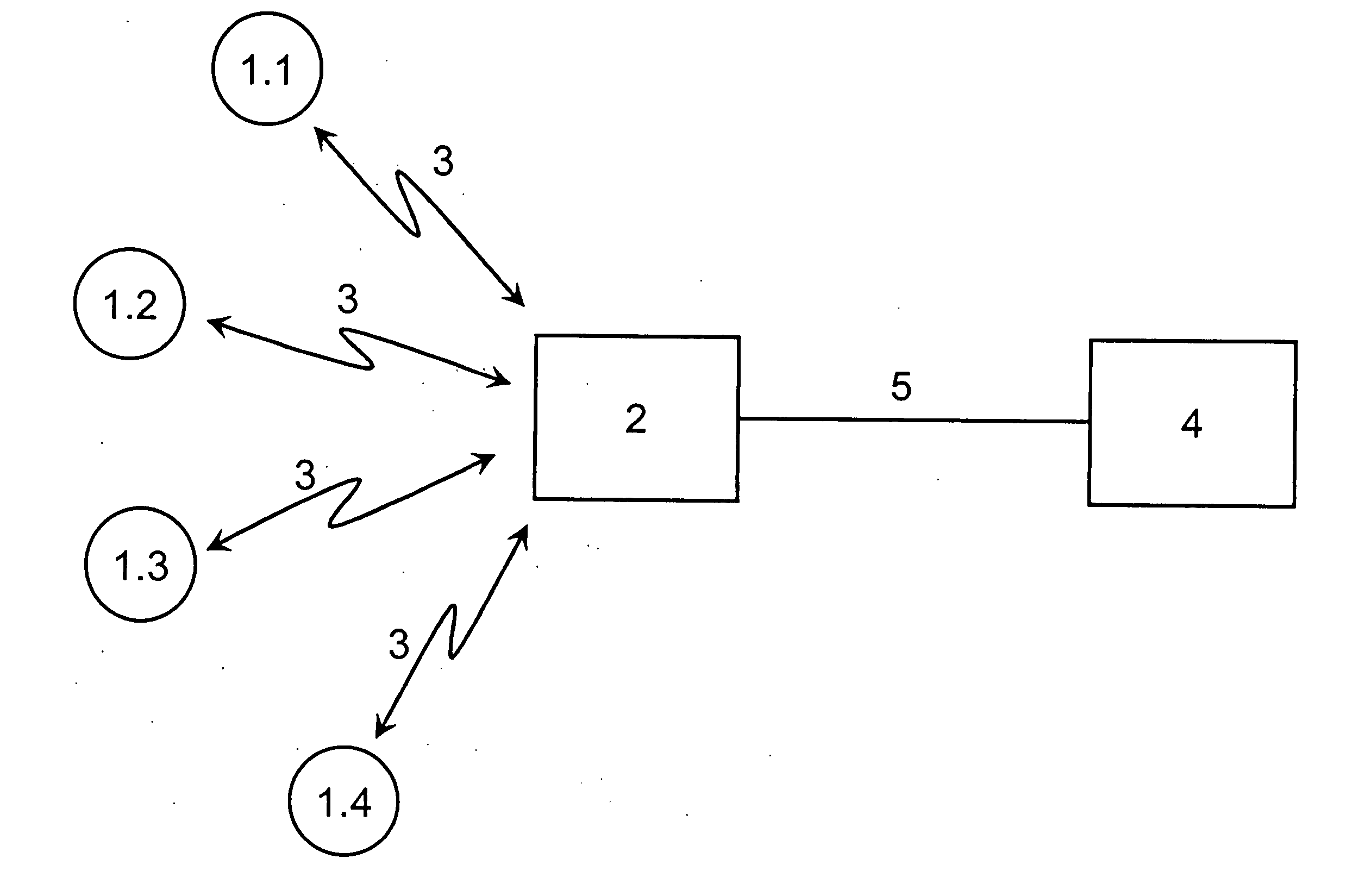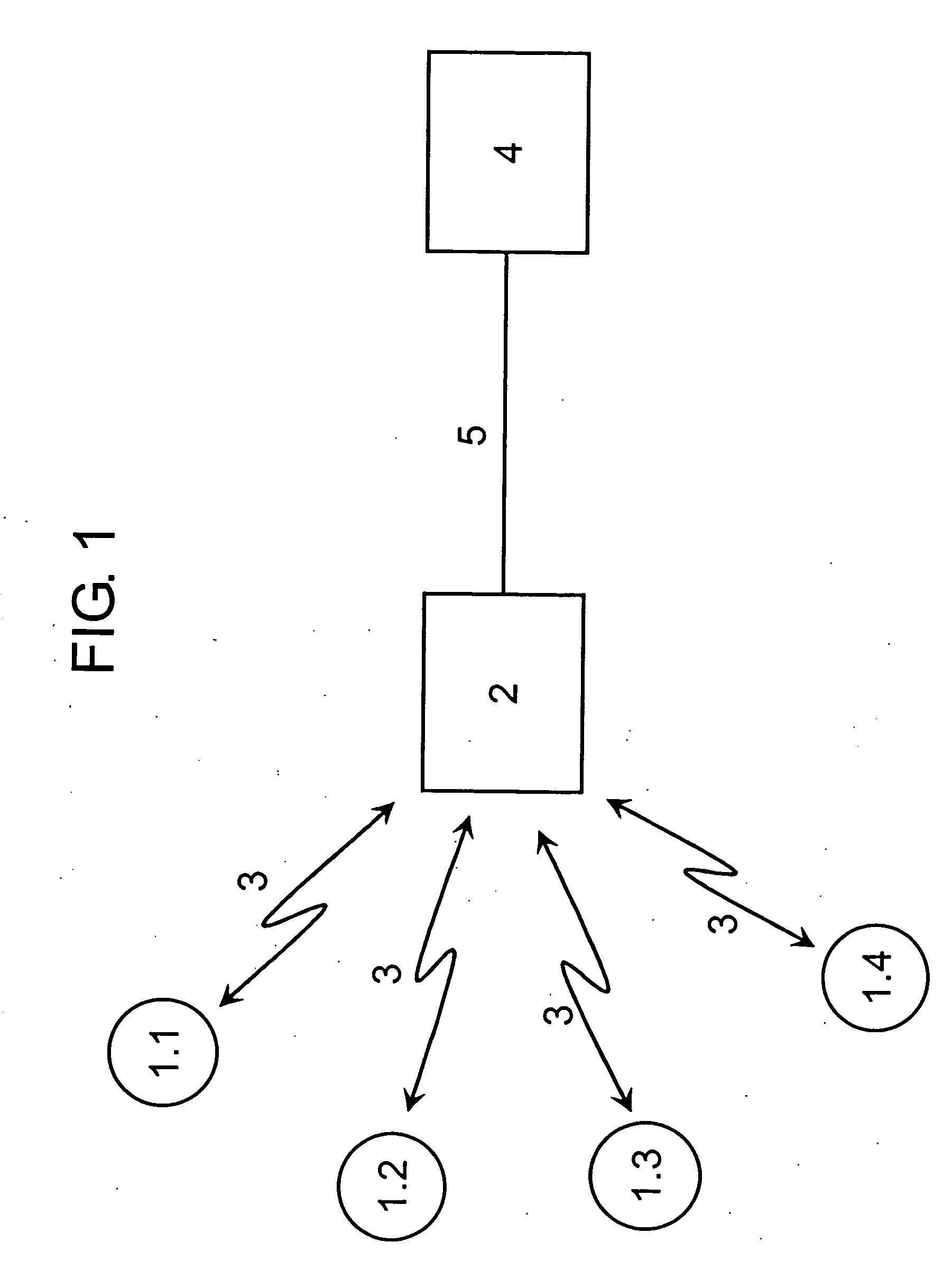Method for authentication
a technology of authentication and method, applied in the field of authentication, can solve the problems of affecting the transmission speed of transmitted messages, affecting the reliability of transmitted messages, so as to achieve the effect of simple computation of additional information
- Summary
- Abstract
- Description
- Claims
- Application Information
AI Technical Summary
Benefits of technology
Problems solved by technology
Method used
Image
Examples
Embodiment Construction
[0023]FIG. 1 shows in a scheme a wireless sensor network that can be used to implement a method according to the invention. Several sensor nodes 1 are connected over wireless network connections 3 to a sink 2. To this sink 2 a distant computer 4 is connected over a wired connection 5.
[0024] Before installing the wireless sensors 1, a seed x0, a keyed hash function h to compute the authentication identifier, a further hash function to generate the key and the maximum number n of iterations to apply the further hash function, is stored.
[0025] The keyed hash function his a MAC (Message Authentication Code), the further hash function is designed to generate Lamport's hash values. It holds that from a hash value xj a hash value xj+1 can be computed by applying a further hash function, wherein x0 serves as seed. In addition, to reduce the computation effort for a certain number of applications of the further hash function, for example 64 subsequent computations, interim values of the ha...
PUM
 Login to View More
Login to View More Abstract
Description
Claims
Application Information
 Login to View More
Login to View More - R&D
- Intellectual Property
- Life Sciences
- Materials
- Tech Scout
- Unparalleled Data Quality
- Higher Quality Content
- 60% Fewer Hallucinations
Browse by: Latest US Patents, China's latest patents, Technical Efficacy Thesaurus, Application Domain, Technology Topic, Popular Technical Reports.
© 2025 PatSnap. All rights reserved.Legal|Privacy policy|Modern Slavery Act Transparency Statement|Sitemap|About US| Contact US: help@patsnap.com


